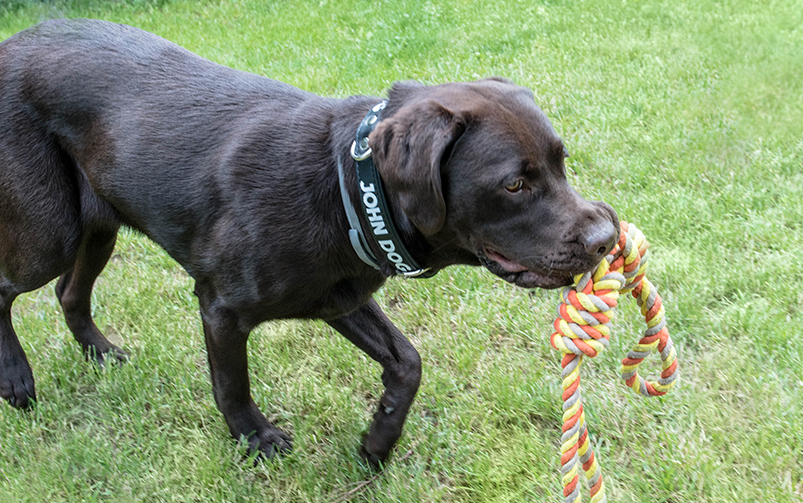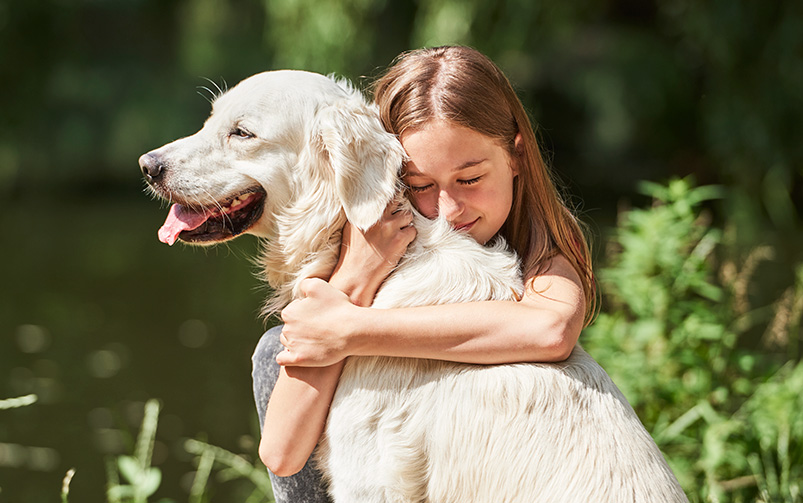H for story
Who was the first to use the beneficial influence of dogs on human well-being in treatment? As early as the 18th century, in a psychiatric hospital in England, doctors came up with the idea that patients should look after animals to help them develop self-control. Another important moment in the history of dog therapy is the successful attempt to establish contact with a mentally ill man, which was undertaken in 1958 by the American psychiatrist Boris Levinson. In 1964, he described his experiences in a book entitled “The dog as a therapist.” In the 1970s, Samuel and Elizabeth Corsons, who worked at the University of Ohio, developed a method they called pet-facilitated psychotherapy , which involved people with mental disorders interacting with dogs on a regular basis. The form of therapy used by them brought very good results, positively influencing the patients’ well-being. The Corsons were also the first to come up with the idea of using dogs in the process of rehabilitating prisoners.
And like the instructor
Dog therapy is a cooperation between a participant (or a group of participants) of therapy, a specially trained dog and an instructor, i.e. a dog therapist, who watches over the course of the process all the time. To become a dog therapy instructor, you must be qualified to do this highly responsible job.
J like Janina the Philosopher
Janina The Philosopher is the author of one of the first books on dog therapy. In “Dogotherapy? What is it? ”, Published in 2004, you can find not only some scientific knowledge, but also a description of its practical application – The philosopher worked with her dogs at the Polish Association for People with Mental Handicap in Jarosław. A year earlier, a book on a similar subject appeared on the publishing market: “Dogotherapy – contact therapy with dogs: assumptions and use in working with people with disabilities”.
K is for kynotherapy
Kynotherapy is just another name for dog therapy. You may also come across the term “canisterapia”. The three terms can be used interchangeably as they mean the same thing: therapy in which the dog is involved.

L like a labrador
Labradors, next to golden retrievers, are the most frequently trained dogs for dog therapy. They have a mild temper and are also very sensitive and faithful human friends!
M like Maria Czerwińska
Maria Czerwińska is a precursor of dog therapy in Poland and the author of the term “dog therapy” itself.
In 1987, Czerwińska took part in the production of a documentary entitled “I see”, which was devoted to blind children from the center in Laski. She noticed then that the little characters of the film were very well influenced by the contact with her dog on the set – touch, learning about shapes with your hand, stroking. From then on, dogs became frequent guests in Laski. It was getting louder and louder about the therapeutic role of quadrupeds. In 1996, at a press conference organized on the occasion of the Zoological Fair and the World Animal Day, Czerwińska delivered a lecture entitled “Dogotherapy”. The new word quickly became the commonly used term.
N for disability
It is said that people with disabilities need contact with their dog even more than healthy people. Dogotherapy is a great method of supporting rehabilitation.
Oh, for a sheepdog
Sheepdogs have certain predispositions to work in dog therapy. Many Border Collies can be found among dog therapists. They are very intelligent, caring and patient dogs.
P for the Polish Association of Dogotherapy
The Polish Association of Dogotherapy is an association that promotes and deepens knowledge about dogotherapy, supports and associates people interested in this form of therapy, as well as training – both dogs and people. PZD has been in existence since 2004.
R for race
Although some breeds, according to the pattern, are particularly predisposed to work in dog therapy, what really matters is the pooch’s personality, not the breed itself. After all, there are impatient Goldens, just as there are calm, balanced, and wise mongrels. Currently, the most frequently chosen breeds for dog therapy are Newfoundlands, Bernese Mountain Dogs, Alaskan Malamutes, Border Collies and Cavaliers, next to Goldenes and Labradors, but remember that it is the character and not the breed of a given dog that determines whether it is suitable for therapeutic work. The dog should be gentle, balanced, obedient, predictable, focused, tolerant and willing to work. J
S for the People’s Pets Association
The Animal People Association conducts various educational and therapeutic activities with the participation of dogs and cats (yes, yes, contrary to stereotypes, cats can also interact with humans!). The Association has prepared a free guide for dog therapy for people with disabilities. If you want to deepen your knowledge, please download it from here!
T is for animal therapy
The second, next to animal-assisted activity , form of dog therapy is animal-assisted therapy (AAT), that is, animal-assisted therapy. It has the same goal as AAA – to improve human functioning on many levels: physical, emotional, cognitive and social. It differs from AAA in a planned, goal-oriented and documented course.

U like participant
Who can participate in dog therapy? The list is really long and still open. A participant in therapy with the participation of a dog may be a person with a physical disability (e.g. blind), Down syndrome, ADHD, autism, as well as someone who is struggling with emotional problems (e.g. depression or anxiety). Dog therapy is also used in the process of educating children, as well as as part of the rehabilitation of young people in correctional facilities and prisoners.
W like education
What diploma do you need to get to work as a dog therapist? Many dog therapists have pedagogical, psychological, physiotherapeutic or veterinary education to their credit, but nowadays, in every large city you can find a course or training with a diploma or certificate entitling you to work in the profession of a dog therapist.
Z for zootherapy
Dogotherapy is one of the forms of animal therapy, or zootherapy. Behind this name are different types of therapeutic human-animal interactions. Not only dogs and cats can have a good influence on our condition and well-being. Horses, dolphins, alpacas, hamsters and even … turtles can also take part in zootherapy!
SUMMARY
The effectiveness of dog therapy is another reason to love dogs, and it is clear evidence that they are humans’ best companions. It is worth remembering about it every day, during ordinary activities related to caring for a pet. Enjoy the time together, admire the dog’s joy in life and appreciate devotion. Four-legged dog therapists deserve recognition – their work makes the world of people who need it change for the better!
